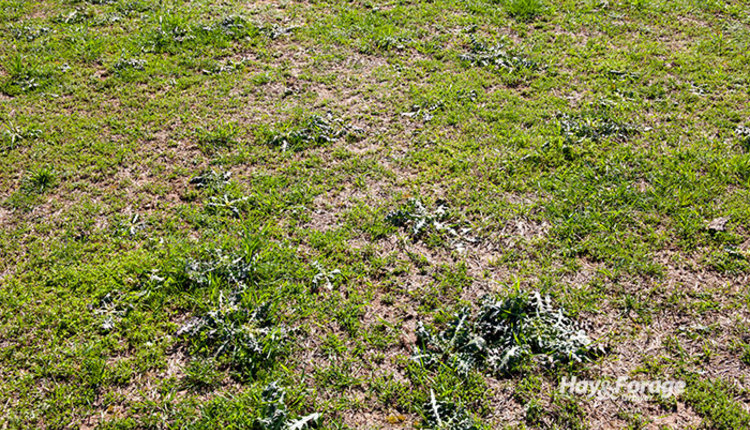Rejuvenate or renovate? |
| By Amber Friedrichsen, Associate Editor |
|
|
 Repairing a pasture is comparable to repairing a home, minus the hammer and nails. There is a spectrum of work that can be done, ranging from rejuvenation to renovation. Pasture rejuvenation refers to implementing practices that improve existing forages and enhance their nutritive values, similar to fixing a leak or replacing a lightbulb. Pasture renovation, on the other hand, involves destroying the current stand and establishing a new one – tearing it down and rebuilding from the ground up. Rocky Lemus with Mississippi State University Extension says the decision to rejuvenate or renovate pastures is specific to every situation. He advises producers to assess their plant populations and define long-term production objectives before taking action. “Some of these objectives should include stand persistence, forage production, nutritive value, use of equipment, potential return on investment, and the level of risk associated with the management approach,” the forage specialist details. A three-pronged attack There are three core principles when it comes to rejuvenating pastures: fertilization, weed control, and planned grazing management. Fertilization can be one of the most cost-effective practices to boost yield and nutritive value, and application rates can be determined by administering a soil test. “Plant response can be considerably improved with fertilizer if current soil nutrient levels are below the medium range,” Lemus explains. “Soils with phosphorous and potassium levels in the very low, low, and medium range have a probability of forage yield response ranging from 95% to 100%, 70% to 95%, and 40% to 75%, respectively.” Weed control is another aspect of pasture rejuvenation and begins with identifying the weeds that are present. After choosing an appropriate herbicide, follow the label recommendations for application rates, as well as grazing and haymaking restrictions. Lemus notes that lower application rates are needed for weeds less than 6 inches tall, which can be economically justifiable. He also points out that mowing pastures can remove weeds; however, this practice can become expensive and does not provide long-term control. Fertilization and weed control will not rejuvenate a pasture if grazing management issues are not also addressed. Lemus attributes overgrazing as one of the most damaging things to occur in a pasture and suggests utilizing a multi-paddock rotational grazing system. When grazing livestock, leave a stubble height of 3 to 4 inches to ensure regrowth. Timing, frequency, and stocking rates are also important factors to consider. “Sometimes, providing longer rest periods can be a good tool to determine the rejuvenation approach,” Lemus says. “Keep in mind that providing smaller areas and adequate stocking rates can also help with the uniformity of manure deposition and nutrient cycling.” Another practice to encourage rejuvenation in perennial pastures is mechanical disturbance, such as light disking or using an aerator. Doing so in the fall allows water to infiltrate the soil more easily and can improve the forage’s water retention for the following season. Even so, too much disturbance can be detrimental to the plants’ root system during the winter months. A more drastic strategy Pasture renovation is a drastic decision and should be used as a last resort. The process involves terminating a forage stand with glyphosate, tilling, and reseeding. Lemus recommends renovation when the density of your desired species is less than 50%. “If taking this approach, eliminate the stand in mid- to late summer, plant a winter annual crop, and then replant the desired warm-season forage species in the spring,” he advises. “Proper seedbed preparation is important since loose soil results in improper seeding depth.” A new seeding may entail a loss of production during the establishment year. Nevertheless, pasture renovation can promote higher forage yields and better nutritive value in future growing seasons.  Amber Friedrichsen |
